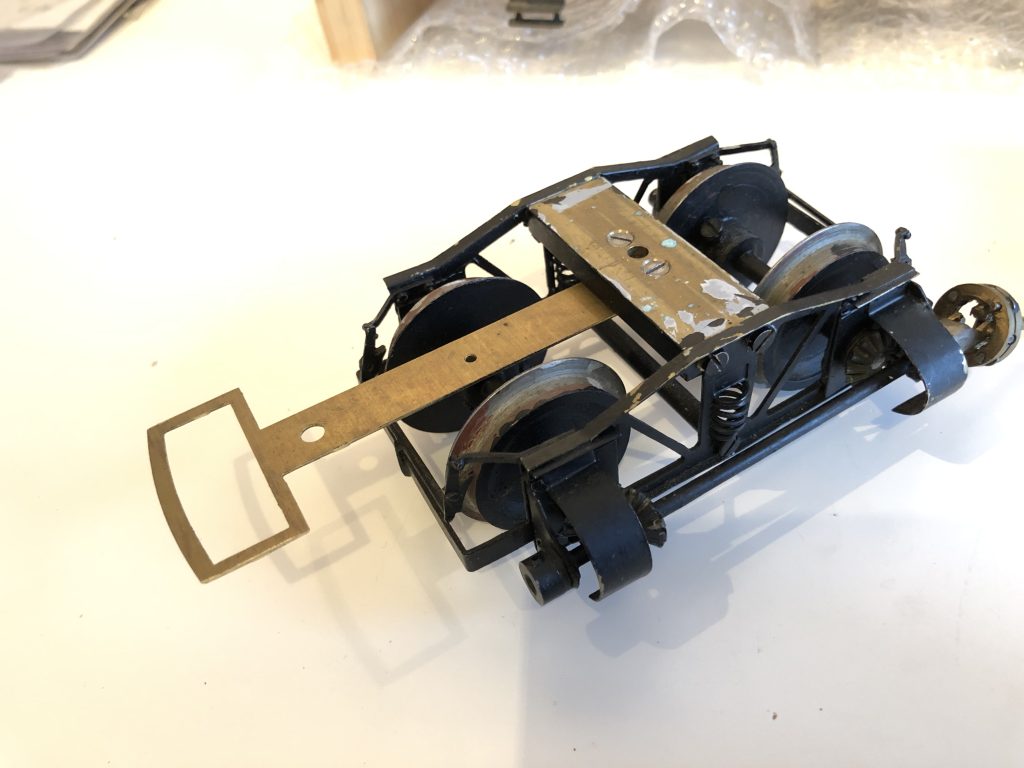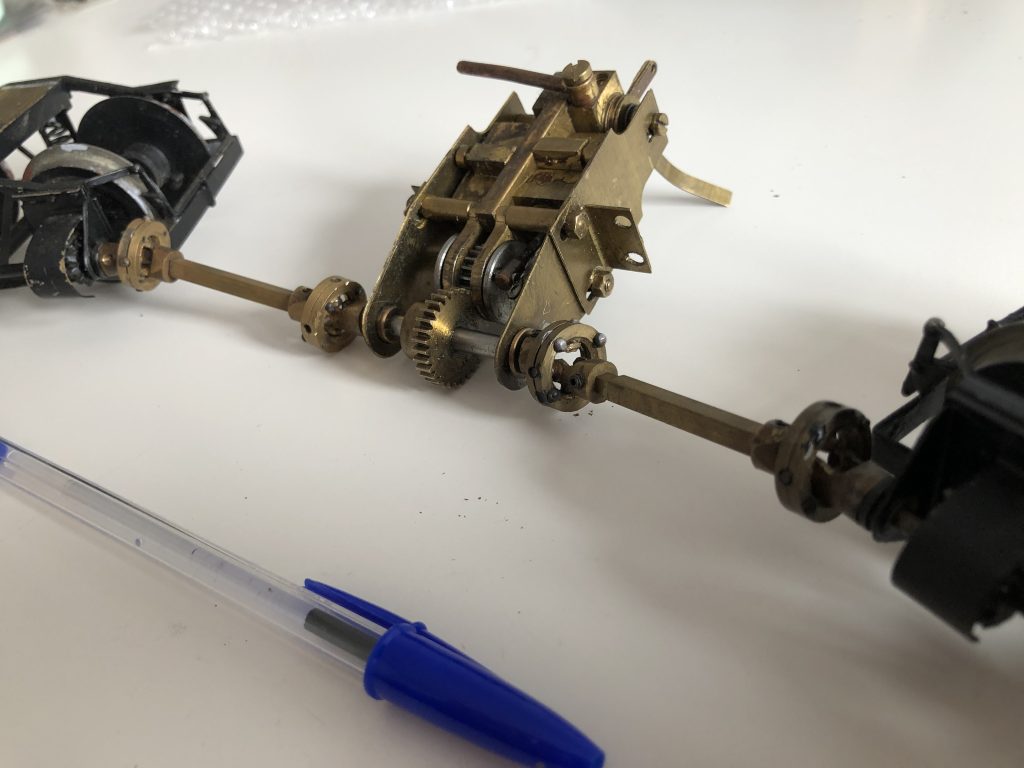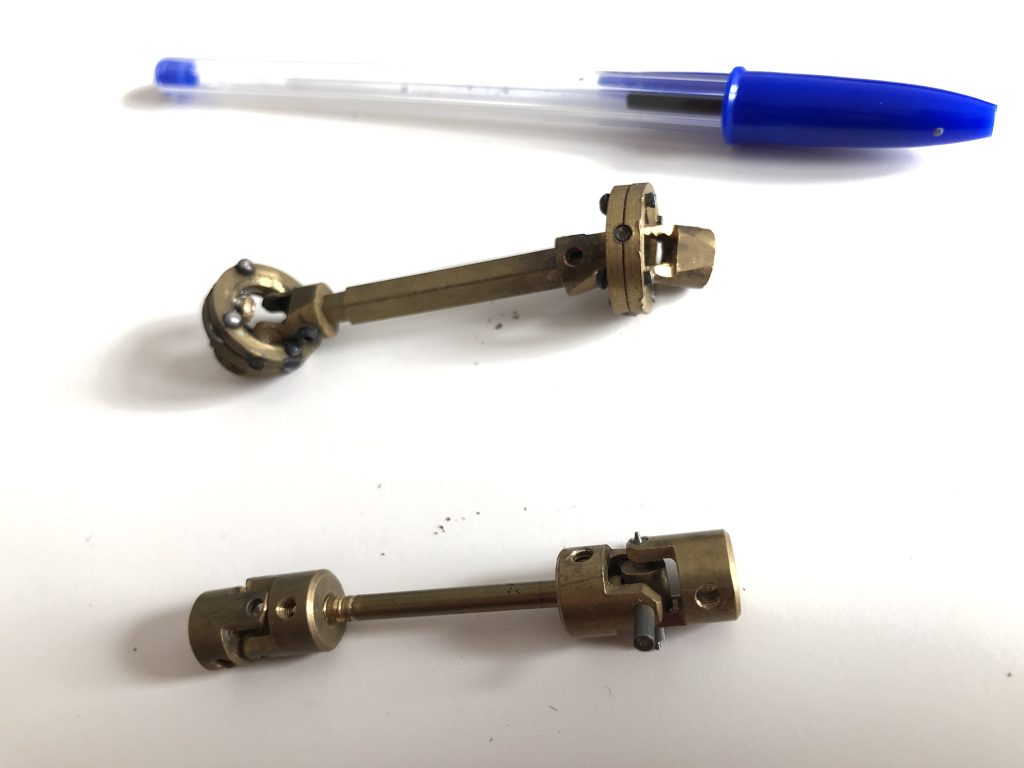One of the great things about a Shay locomotive is the unique drive train – a flexible axle running along one side of the locomotive from the power unit (crankshaft) to the bogie trucks. This Wikipedia page has more information on how it works.
I purchased a part-built Steamlines Shay model (manufactured in the 1990s) in 16mm scale (approx 1:19). Today I took most of it apart: I unmounted the gas tank, the boiler, the lubricator and the power unit from the frame. Small boilers under 3 bar-litres like this one don’t need annual testing. However, because the boiler is probably 30 years old, I am planning to get it re-tested just to be on the safe side.
The bogies are already made up. The crossbars were upside-down (there should be countersinks in the top to hold the heads of the bolts that fix the coupling arm – but they were in the bottom) so I corrected this, and also mounted the coupling arm on the rear bogie. The kit assumes LGB couplings, but also gives instructions for other coupling types if preferred.

The linkages connect the power unit to the bogies like this (biro for scale):

Several other owners of this same Shay seem to have different universal joints. In the kit that I purchased, there are parts for two varieties. The upper variety are already made up. The lower variety was in a bag of parts and are not pinned together (see bottom left). There are no instructions on how to make them up.

The upper one seems to match the prototype. The lower one is visible in other incarnations of this kit, for example:
- Derek Round of Yorkshire rebuilt a Steamlines Shay as a 3-truck model. In the text, he refers to having to replace the u-joints (possibly the upper ones in my picture) with parts found online that look like the lower variant.
- This user in Japan (possibly called Hiroshi or Akubi) has a steamlines shay with the lower variant of U-joint. Here is a video of it in action (from 2011).
- This beautiful version in G scale (45mm gauge) also uses the lower variant of U-joint.
So my question is: which one is correct for this model? I will update this page when I have found out.
Justin – 2 May 2022.
Update 6th May 2022: I have been in email contact with a few people over the last week. It seems that the upper image of linkages was the original version that came with earlier versions of the kit, and the lower image shows a later option, possibly more robust. Every other model of this kit that I have seen, including the one shown in the instructions video, use the later (lower) option.
Alongside this discussion, I have found that later versions of the power unit (see picture at the top of this post) had additional gearing so that the locomotive would run slower. More in a future post.
